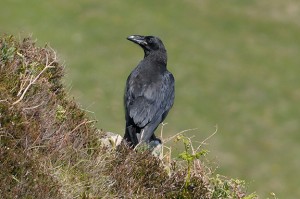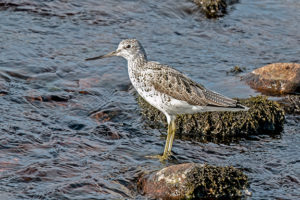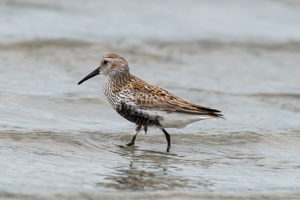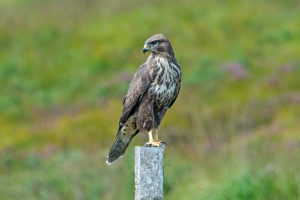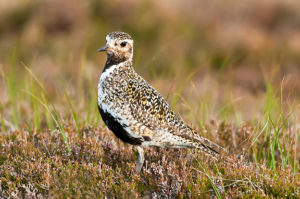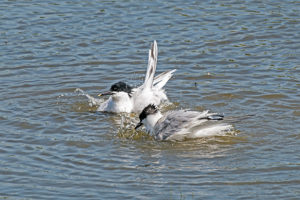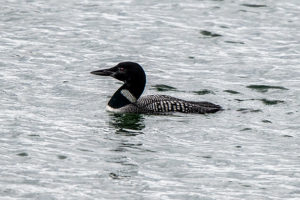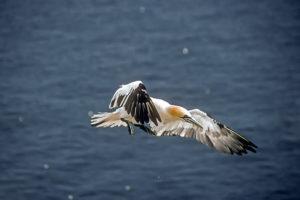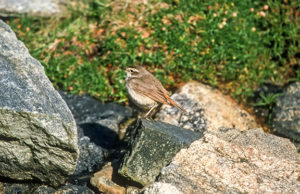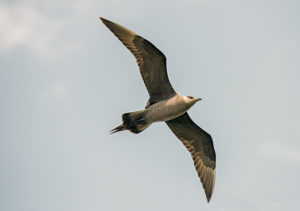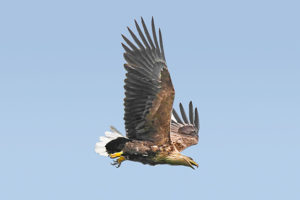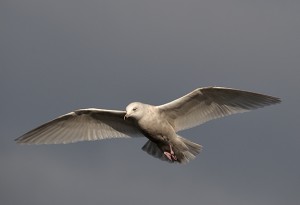Bird Life around Strathy
The Strathy Bay area may not be as widely known for birding as some sites in the north of Scotland, nevertheless it can produce a varied and interesting range of species. It does not attract the number of land based bird watchers as the more popular sites, and being under-watched, it is probable that interesting species are missed. The importance of the tip of Strathy Point as a Sea Watching location for both pelagic and land birds, plus various cetaceans is well established. If we extend the area under consideration, taking in the hinterland and neighbouring areas such as Melvich Bay then we may significantly increase the potential range of birds we may encounter.
The bird year may be divided broadly into various sections; the breeding season, migration and passage (both pre and post nuptial) and winter. These periods can have significant overlap, making it impossible to apply strict dates to them. And of course birds can appear randomly throughout the year almost anywhere.
The Breeding Season
The core season is May to July but given the range of species in the area, the season can begin as early as March, occasionally earlier and it can extend to August or even September, particularly for Red Throated Divers. This is the time when we see the familiar summer visitors such as hirundines, warblers, wheatears etc. The sea cliffs do not support large colonies when compared to places like Dunnet, but all the usual species are present, and we can find Kittiwake, Fulmar, Shag, Cormorant, most of the common gull species, Auks, Rock doves Eider Ducks and a few Puffins. The earliest nest builders are usually the ravens which can start nesting in March or even February. Shag and rock dove can also begin nesting early. How many of our rock doves are true specimens as opposed to feral hybridised pigeons is open to debate. Buzzard and Kestrel should be active by April, although numbers of both are reflected in the well documented general reduction of bird numbers in Britain during past years. A few pairs of Oystercatcher and Ringed Plover are scattered across the area and fields behind the cliffs can hold Lapwing, Snipe, and Skylark. On areas of moorland we may find Curlew, Dunlin, and perhaps Greenshank feeding on the margins of lochs and rivers. The area also holds a range of small birds including Meadow and Rock Pipit, Thrushes, Wheatear, and Stonechat. From viewpoints along the sea cliffs either side of the Point, it is not unusual to see birds such as Red Throated Divers which tend to fish in the sea, or occasionally Black Throated Divers which prefer the inland freshwater lochs. Gannets can be seen following fish shoals and Sandwich Terns are often in the bay from late March.
Migration and Passage
The main migration times are March to May, and September and October, but wandering birds may be encountered throughout the year.The area lies west of the main migration routes, but significant movements of birds can be seen. The most obvious is in early spring and autumn, when flocks of geese and swans pass over on their way to or from their breeding areas in places like Iceland. Groups of Redwing and Fieldfare also pass through every year. Strathy Point extends about 4km into the North Atlantic and is therefore an excellent sea watching site to observe Petrels, Shearwaters various gulls and ducks and Gannets passing out at sea. Less obvious birds also use the area as landfall or a jumping off point. The various small areas of whins and stunted trees including those extending along the river valley provide excellent shelter for migrating warblers etc. Species like Bluethroat, Little Bunting, Rose-coloured Starling , Bee Eater,,Ringed Necked Duck, Wryneck, Great Grey Shrike and Firecrest have been recorded and there is little doubt that similar species pass through annually. Diligent searching at the appropriate time could provide interesting rewards.
Winter
Winter can be broadly considered to be November to March.Bird numbers are low, but a surprising list can be accumulated. Visiting raptors have included Hen Harrier, Merlin, Peregrine, Sparrowhawk Kestrel and occasional White Tailed Eagle. Ravens are seen regularly. Sea watching in the bay often reveals divers, including Great Northern, with an increasing possibility of White Billed. Small groups of long tailed ducks may be found and rarer gulls do appear. Recently both Iceland and Glaucous have been seen. Of course the usual gulls, cormorants etc are always present along with small birds including stonechats and pipits which have moved to the coast from harsh inland conditions.
